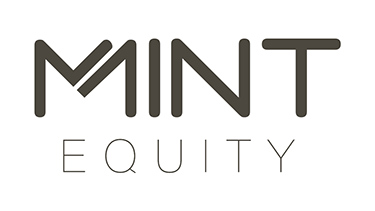Back in December 2014, the Australian Prudential Regulation Authority (APRA) imposed guidelines for all lenders on how they calculated a borrower’s serviceability (ie, their ability to repay the loan). Prior to December 2014, lenders were able to set their own levels and calculations on how to determine a borrower’s capacity to repay.
Fast forward to May 2019 and it looks like the restrictions have impacted the flow of credit too much – which has contributed to fewer buyers in the market and property prices falling over the last 12 months. And with a historically low cash rate, these restrictions are totally out of touch from today’s market.
On 21 May 2019, APRA proposed that these guidelines be removed, and lenders would be permitted to review and set their own minimum interest rate floor to use in serviceability calculations.
But what does that mean for borrowers?
Your interest rate is different in your home loan approval assessment
Even if the home loan product you’ve selected has an interest rate of say 3.49%, the lender calculates your ability to repay the loan as if the interest rate was 7% or 2% higher than the actual.
Seems odd, but the higher interest rate calculation is to provision for any interest rate variations once the loan is settled. The lender wants to make sure you can still make your repayments, if the economy struggles and interest rates increase.
Why consumers can’t borrow as much as they used to
We’ve all heard terrible stories, particularly from the Banking Royal Commission about borrowers being lent more money than they can afford to repay. However, the guideline went too far, too quickly, and borrowers were left with having to shop around to different lenders, hoping they could borrow enough to buy the property they wanted.
Here’s an example of how the guidelines work based on a $800,000 loan over 30 years if we used December 2014 interest rates.
Serviceability guidance at 7% = $1,227 per week in P&I repayments
Actual interest rate at 5.59% in December 2014 = $1,057 per week in P&I repayments
That’s seems like a reasonable buffer back in 2014, but the issue is when the same guideline is applied to today’s current home loan interest rates.
Actual interest rate at 3.49% in May 2019 = $827 per week in P&I repayments
We now have a difference of $400 per week in loan repayments between the actual and the fictious.
Rather than the lender accepting the actual repayment amount, the lender would use the guideline figure, add that to the consumer’s living expenses ((or use their own living expenses calculations (HEM - Household Expenditure Measure)which are often higher than the actual expenses)) and subtract those figures from the borrower’s income.
Essentially the total expenses in this scenario would have been $400 higher per week than the actual real-life repayments – and the borrower would need an additional $20,800 a year in income to cover the imaginary repayments.
As the borrower wouldn’t have the additional $20,800 in income, the amount they could borrow from the lender would be reduced - significantly.
Borrowers to benefit from APRA changes
With low home loan interest rates, a likely cash rate cut from the RBA next month, and a falling property market, enabling consumers to borrow with less restrictions is a good thing for the economy. PM Scott Morrison has always said that keeping credit flowing is good for the economy.
APRA has begun consulting on revising the guidelines for serviceability assessments for residential mortgage loan applications. And now with the PM and Treasurer’s backing, it’s likely we’ll see the guidelines removed.
APRA Chair Wayne Byres said the environment for lenders had evolved since 2014, prompting APRA to review the ongoing appropriateness of the current guidance.
“The changes, while likely to increase the maximum borrowing capacity for a given borrower, are not intended to signify any lessening in the importance that APRA places on the maintenance of sound lending standards. Rather, it is simply recognition that the current interest rate environment does not warrant a uniform mandated interest rate floor of 7 per cent across all products.”
This will enable each lender to decide how they want to calculate a borrower’s ability to repay the loan and increased competition from smaller lenders – essentially offering borrowers more choice.
A four-week consultation will close on 18 June 2019, ahead of APRA releasing a final version of the updated APG 223 shortly afterwards.
Know your borrowing capacity
The best way to find out how much you can borrow is to speak with an experienced mortgage broker like Mint Equity. We can quickly assess your borrowing capacity and let you know the best interest rates.
References
APRA proposes amending guidance on mortgage lending
Treasurer backs APRA buffer change
APRA looks to amend mortgage lending guidance
Photo courtesy of Julia Kuzenkov from Pexels


